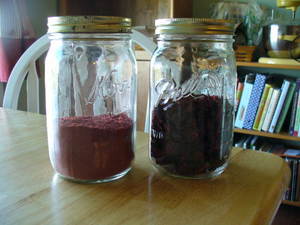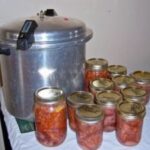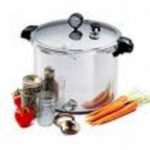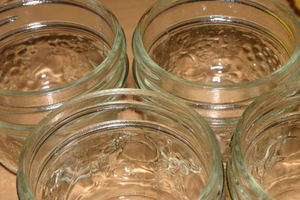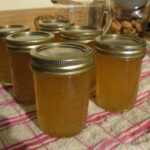Those who are new to home canning will soon learn how fun it can be, but it won’t be long before they’ll have to face down a pile of fresh produce only to discover that they’ve run out of canning jars. To save money and always be ready to preserve great produce deals and bumper crops, the home canner should stock up on most, if not all, the jars they’ll need for the canning season ahead of time. This article will address the best places to buy canning jars, which sizes are most appropriate for which foods, and how to estimate how many jars will be needed.
Many stores that sell canning supplies, including hardware stores, grocery stores and department stores such as Walmart, don’t keep large amounts of jars on hand, especially in the off season. Canning has been steadily growing in popularity for the last few years, and many manufacturers and stores are experiencing shortages and running completely out of jars before the canning season is even over. This makes it very important to keep enough jars on hand, or face wasting good food for the want of a place to put it. I don’t recommend hoarding jars, just making sure that a realistically large supply is on hand. If a canner finds they’ve stocked too many, there will be plenty of needy people to take surplus jars off their hands the next season. But for the first few years, it’s better to err on the side of a few extra, as opposed to too few.
There are alternatives to buying canning jars in the store. Because canning jars can be reused indefinitely as long as they don’t have any cracks or chips in them, they are a great item to find second hand. Spreading the word among friends and family is a great tactic, and could result in the inheritance of a whole collection from a retiring canner. Most older people who can’t can anymore, or people who just don’t have the time, will be thrilled to find a good and useful home for their jars. Rummage sales are a great place to pick up canning jars, as are thrift stores. A request made on Craigslist or Freecycle may also net a lot of jars for a new canning enthusiast who is just getting established.
Checking the price carefully when buying second hand is very important. Canning jars new from the store generally cost between $.70 to $1.00a jar, depending on the size. When buying second hand, it’s vital to know the item’s retail cost to make sure the used price is actually a good deal. $.25 to $.50 a jar is a fair price and an excellent deal for most used jars.
Canning jars come in various sizes, the most common being half-pint, pint, and quart sizes. A pint is the equivalent of two cups, or 16 oz. Memorizing these conversions and measurements can be very useful to the home canner when estimating batches and the amount of jars needed. There are also novelty sizes such as 4 oz, half-gallon, and gallon, which can be useful for some things, but aren’t very cost effective since the manufacturers don’t produce many of them. They also come in regular and wide-mouth. In the long run, regular are the better deal, since their lids and rings cost less to replace, though wide-mouth can be easier to pack when it comes to bigger food items, like fruit chunks and dill pickles.
Half-Pint sized jars are good for jams and jellies, and make a good size for relishes or salsas meant for gifts. They each hold a cup, and so might not be as useful for large families who would go through them really quickly. The smaller the jar, the more of them are needed to hold the same amount of food.
Pint sized jars are great for things like dill slices, ready to drink fruit juices, specialty items like brandied fruits and spiced apples, and veggies like beans and corn. They would also be good for jams and jellies in households with large families that will go through the whole two cups of jelly before it can be stored in the fridge too long and mold. Most jam and jelly will keep in the fridge once they’re opened for about 6 weeks, but low-sugar recipes may store only for up to three weeks before going bad.
Quart sized jars are great for tomato sauce, applesauce, dill pickles and other pickled veggies, like dilly beans, beets, asparagus and chow-chow. Quarts are also a good choice when canning drink concentrates that are mixed in equal amounts of water, since most serving pitchers and drink jugs are two-quart sizes. Large families may find that it’s useful to can corn or green beans that will be served at meals in quart jars as well, since they may go through a pint of those sides too quickly.
In order to estimate the number of jars needed for all the canning that needs to be done, it is helpful to begin with a list of all the items that will be preserved by canning and in what size each will be processed. Beside each item, an estimate of how many will be used (keep in mind that it will make a difference if the food is meant to be eaten through the winter, for a whole year, or just as an occasional treat or gift). If our household, we use a quart of tomato sauce every two weeks for our weekly pizza night sauce. (We can this in quarts as opposed to pints because it will last in the fridge for a week or two just fine after it’s opened, and they save room and fewer jars are needed.) This means that I plan to can about twenty-five quarts of tomato sauce to supply pizza night for a year. I add to that other tomato sauce recipes I make, such as pasta sauce and chili, and I know that I’ll probably want to have on hand around forty quarts of tomato sauce for a year. By tracking consumption for a couple of weeks or so, the cook can estimate the amount of a given product that will be used in a year. I’d recommend overestimating by a small percentage, just to avoid shortages.
Those who would like to eat locally all year round will find that keeping having enough canning jars and planning ahead when foods are plentiful and in season will save them time and money when winter comes along. Even if a canning enthusiast is not a locavore, they’ll find that having enough jars on hand before the produce comes rolling in will save them trouble in the hot steamy kitchens of summer.
